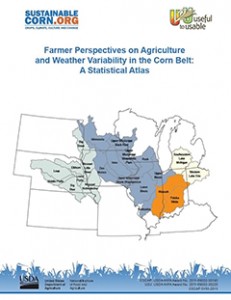Check out Jim Angel’s article regarding predictions of the possible return of El Niño this summer and what it could mean for the Midwest, on his blog at The Climate Observer.
Want to know more about climate patterns like this? U2U is in the final stages of developing a farmer-decision tool called Climate Patterns Viewer. It will provide a series of simple maps showing the impact of global climate patterns like El Niño on Midwestern temperature, precipitation and corn yields. They expect to release it this summer. If you are interested in testing this tool please contact Melissa Widhalm at mwidhalm at purdue dot edu.


